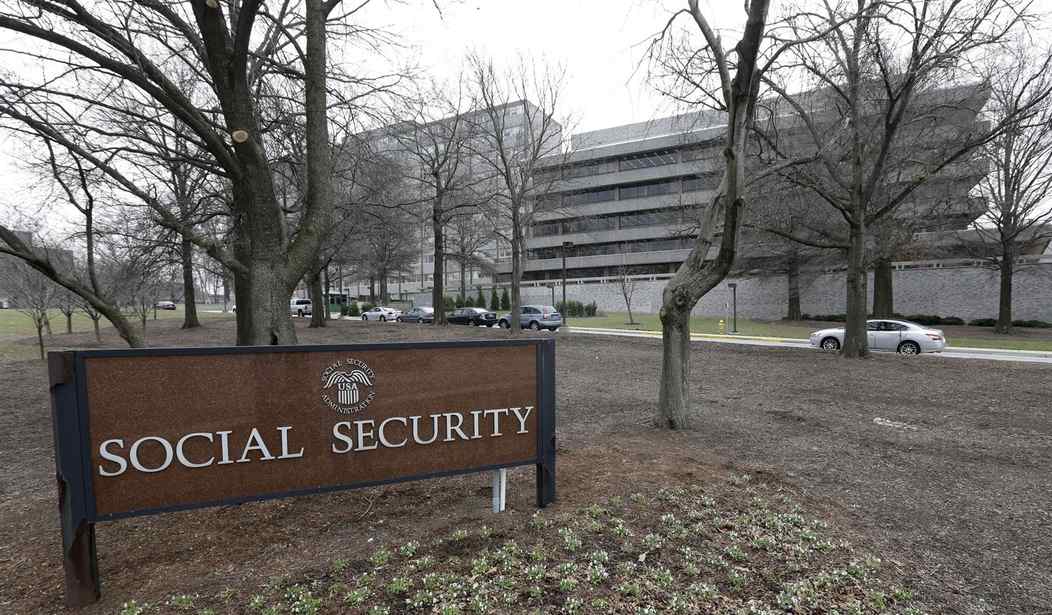The opinions expressed in guest op-eds are those of the writer and do not necessarily represent the views of RedState.com.
There is probably only one widely accepted fact in the debate about Social Security reform: The Social Security system will pay scheduled benefits until 2035. It is almost boilerplate.
Strangely enough, many Americans find comfort in the fact that there is a possibility that the program might pay benefits for a little more than 12 years, or roughly the life expectancy of someone turning 76 today. It shouldn’t be comforting, but for some it is.
Unfortunately, this prospect is the optimist’s outlook because 2035 isn’t a guarantee. It is a single possible outcome, which serves as a warning of what might happen even in a robust economy.
How quickly could Social Security unravel? Going into 1978, Jimmy Carter guaranteed voters that Social Security would pay full benefits for more than 50 years. Five years later, the Social Security Trust Fund was within months of exhaustion.
“This legislation will guarantee that from 1980 to the year 2030, the Social Security funds will be sound,” said President Carter.
Alas, the economy didn’t cooperate.
Likewise, the economy in the present day has drifted far from what the Trustees had expected. Less than a year ago, the Trustees believed that inflation in 2022 would be 3.8 percent and declining. The cost of living adjustment was actually 8.7 percent. The Trustees expected jobs to grow and employers to fill those jobs with people earning more money. Today, most economists are projecting a recession for 2023.
Once again, the economy isn’t cooperating.
No one can tell you how these changes in the economy will shape the future of the program because the Trustees Reports are issued annually, generally six months out of date. As a result, the current report on which policymakers rely is already obsolete. Chances are fairly good that voters as a whole are unlikely to get a glimpse of the future for another six months.
For the time being, we have no gauge to accurately measure the financial health of Social Security. That should worry every voter regardless of age. Millions of people depend upon Social Security.
For the most part, Social Security reform isn’t really about changing the system for the better. When policymakers and pundits talk about “fixing” Social Security, they are really talking about how to distribute the broken program to individuals.
To illustrate, if we were to increase the retirement age to 73, that would not fix Social Security. It explains to future retirees how the cost of doing nothing over the past 40 years will affect them as individuals.
This is a crazy way to “solve” such a massive problem.
True reform must address how to improve what the program does. It has been 40 years since we instituted major changes to the program. This isn’t different from driving your car 400,000 miles without an oil change, and expecting the car to run forever.
Real reform should acknowledge the concern that using antiquated data to gauge the future of a program on which millions depend is irresponsible at best. The report is produced annually, and generally appears about six months out of date. To be honest, there are rotisserie baseball leagues with better data.
The Social Security Administration addressed the issue of using stale data during the COVID-19 crisis. About six months after the release of the 2020 Trustees Report, the agency announced that it had updated interim assumptions because the economy had diverged from the working forecast.
It wrote: “We believe it would be misleading to provide estimates regarding the prospects for solvency of the trust funds for proposals now being considered without recognizing these effects (of COVID on the economy).”
The Social Security Administration (SSA) reasoned that the unexpected economic results would affect the actuarial status of both trust funds, and believed that it would be unwise to produce estimates for congressional proposals without recognizing the rapid changes in the real economy.
They were right, but how is this year any different? How is any year different? The SSA is right: using stale data is misleading. To state the obvious, Social Security reform should start with a commitment to get reliable and timely information on which to discuss the future prospects of the system.
We should have an annual report, one that is produced within the statutory guidelines of 90 days. Within the year, we should have quarterly updates, which would incorporate actual economic data. The Social Security Administration should provide a brief update with material changes in the program’s prospects, once the revised forecast is available.
You might say hold-on there, that sounds like you are running a business. You might be correct. But let’s be completely honest. Millions of people depend upon Social Security. Should the program be run like a business or like your neighbor’s rotisserie sports league?
Brenton Smith ([email protected]) is a policy advisor with The Heartland Institute.













Join the conversation as a VIP Member